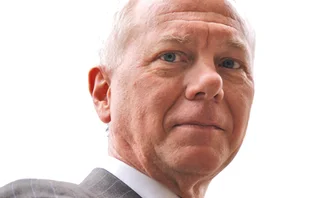
The public interest
"It is ready lending which cures panics, and non-lending or niggardly lending which aggravates them."
These observations of economist Walter Bagehot were written in 1870. He was alluding to Bank of England policy at a time when the Old Lady of Threadneedle Street was held to be overcautious.
Today, the words have an ironic feel. After all, it was ready lending by an unchecked banking industry that ultimately created panic, one that has dragged on for nearly eighteen months. Central banks across the world have learned a lot about trying to cure panics, and have readily lent staggering amounts on a secured and unsecured basis. But the medicine hasn't worked. Shell-shocked banks hoard their capital rather than lend it out freely - without a punishing risk premium - to businesses and consumers.
Governments once allowed banks to be freewheeling because all that ready lending pumped up the economy, generating taxes, and paying for public spending. But that is a bygone era, superceded by a financial command economy with flavours of Clement Atlee and Franklin Delano Roosevelt.
But there are problems with governments ordering quasi-nationalised or recapitalised banks to bestow credit. One is that in the days of the boom people were borrowing far too much and saving far too little. Now, risk aversion and the need to rebuild assets is shocking them back into the saving habit. The step change in consumption may exacerbate recession, but it is important not to fight the urge to save at a reasonable rate.
After all, even the worst recession is unlikely to reverse all the recent improvements in mortality that have pushed governments to bolster private pension saving, as their own national balance sheets deteriorate. With much of recent banking innovation now discredited, responsible savings innovation by insurance and pension companies is perhaps more worthy of encouragement than re-opening the lending floodgates.
And there is another issue with newly assertive civil servants, now at the commanding heights of finance. They serve, and define, the national interest. That can amount to promoting a thriving financial sector protected against systemic risk, or encouraging saving to protect against a demographic time bomb. But it also can boil down to who owns what.
Solvency II was supposed to align the national interest of EU member states with the economic interest of insurance firms, in order to deliver more competitive, and hence attractive, products for consumers. However, the proposed directive has run aground on the rocks of 'who owns what'.
Member states with less developed financial sectors worry about group support. They have blocked it because they fear that more competitive products for their consumers will lead to foreign control of their domestic insurance industry. And France, which has done a deal with this 'gang of 12' nations, wants to permit its domestic life industry to hold less capital against equities. The theory, which Paris does not deny, is that France wants its insurers to hold stakes in French companies in order to block foreign takeovers.
Such a deal would have seemed bizarre a year ago, but with the national interest in finance at the top of everyone's agenda, that's the Solvency II we are likely to get.
Only users who have a paid subscription or are part of a corporate subscription are able to print or copy content.
To access these options, along with all other subscription benefits, please contact info@risk.net or view our subscription options here: http://subscriptions.risk.net/subscribe
You are currently unable to print this content. Please contact info@risk.net to find out more.
You are currently unable to copy this content. Please contact info@risk.net to find out more.
Copyright Infopro Digital Limited. All rights reserved.
As outlined in our terms and conditions, https://www.infopro-digital.com/terms-and-conditions/subscriptions/ (point 2.4), printing is limited to a single copy.
If you would like to purchase additional rights please email info@risk.net
Copyright Infopro Digital Limited. All rights reserved.
You may share this content using our article tools. As outlined in our terms and conditions, https://www.infopro-digital.com/terms-and-conditions/subscriptions/ (clause 2.4), an Authorised User may only make one copy of the materials for their own personal use. You must also comply with the restrictions in clause 2.5.
If you would like to purchase additional rights please email info@risk.net
More on Economics
Webinar – Nowcasting the US economy
Join CME Group Chief Economist, Blu Putnam, as he shares insights using alternative data and nowcasting to monitor developments in the US economy.
Fed Funds Futures in a Post-ZIRP World
As the FOMC returns to more active management of its key target rate, Federal Funds futures have experienced dramatic growth.
Challenging economic pessimism: an optimistic note
A contrarian, upbeat view of the long-term economic outlook
Economists, like hedge fund traders, need open minds
Economists, risk managers and traders must learn the lessons of crisis, says Kaminski
Fed wrong not to start QE tapering, says UBS economist
The surprise decision by the Federal Reserve last month not to scale back its quantitative easing programme will create more volatility, says economist
IMF's Blanchard warns Europe could drag world economy down
IMF chief economist says ‘three-speed’ global economy could be dangerous







